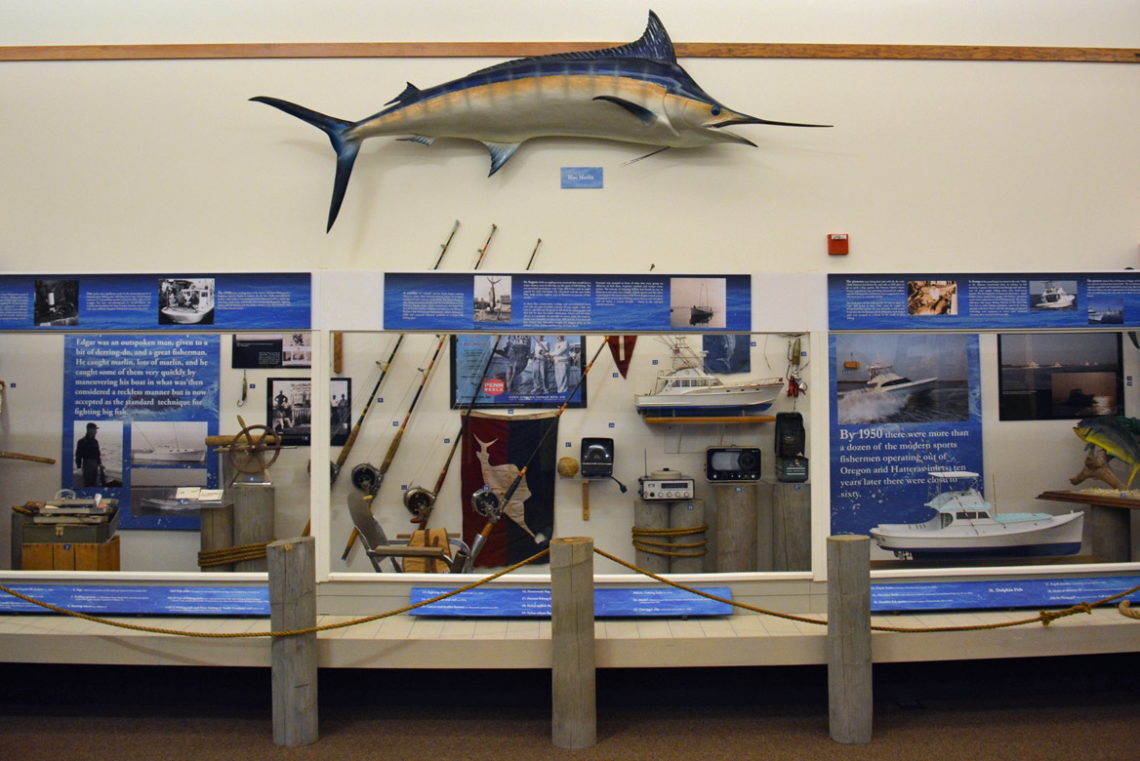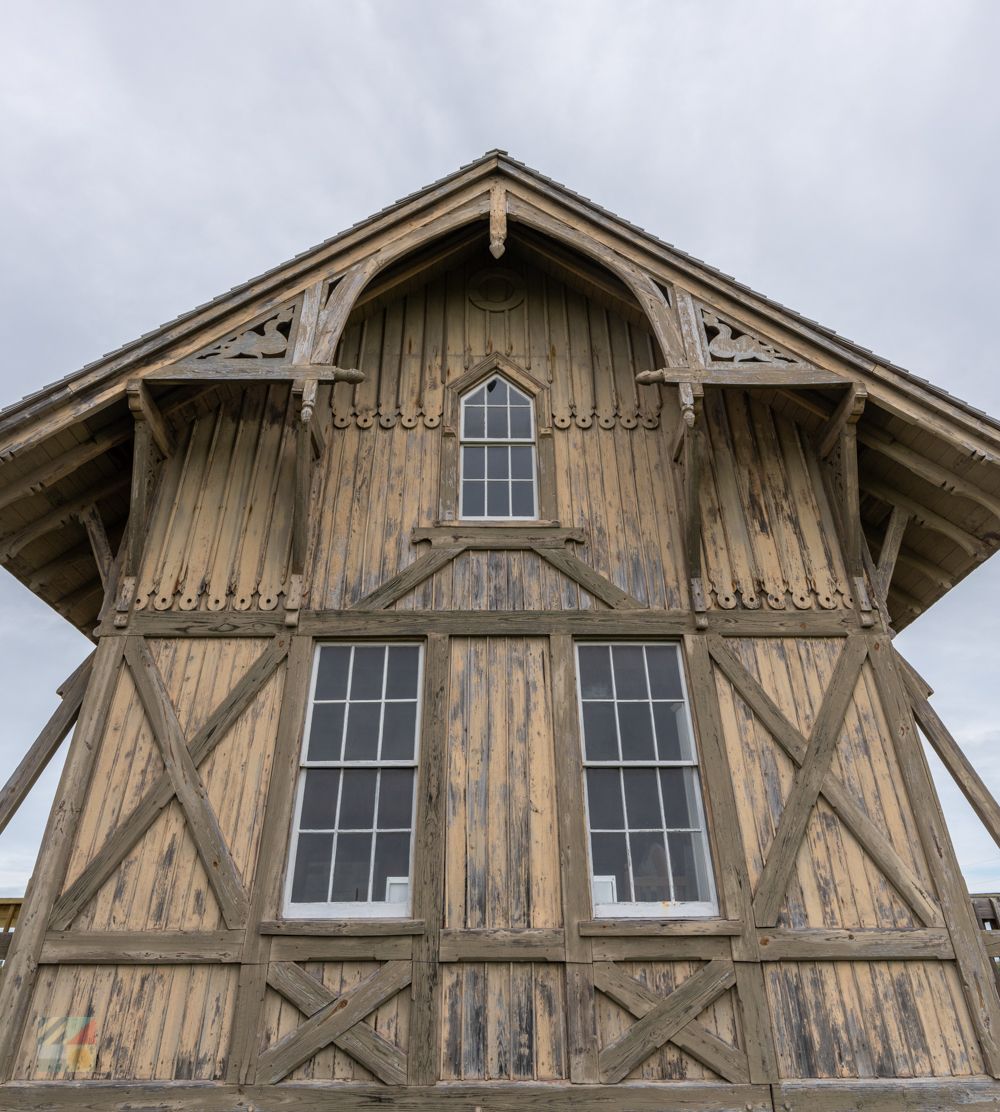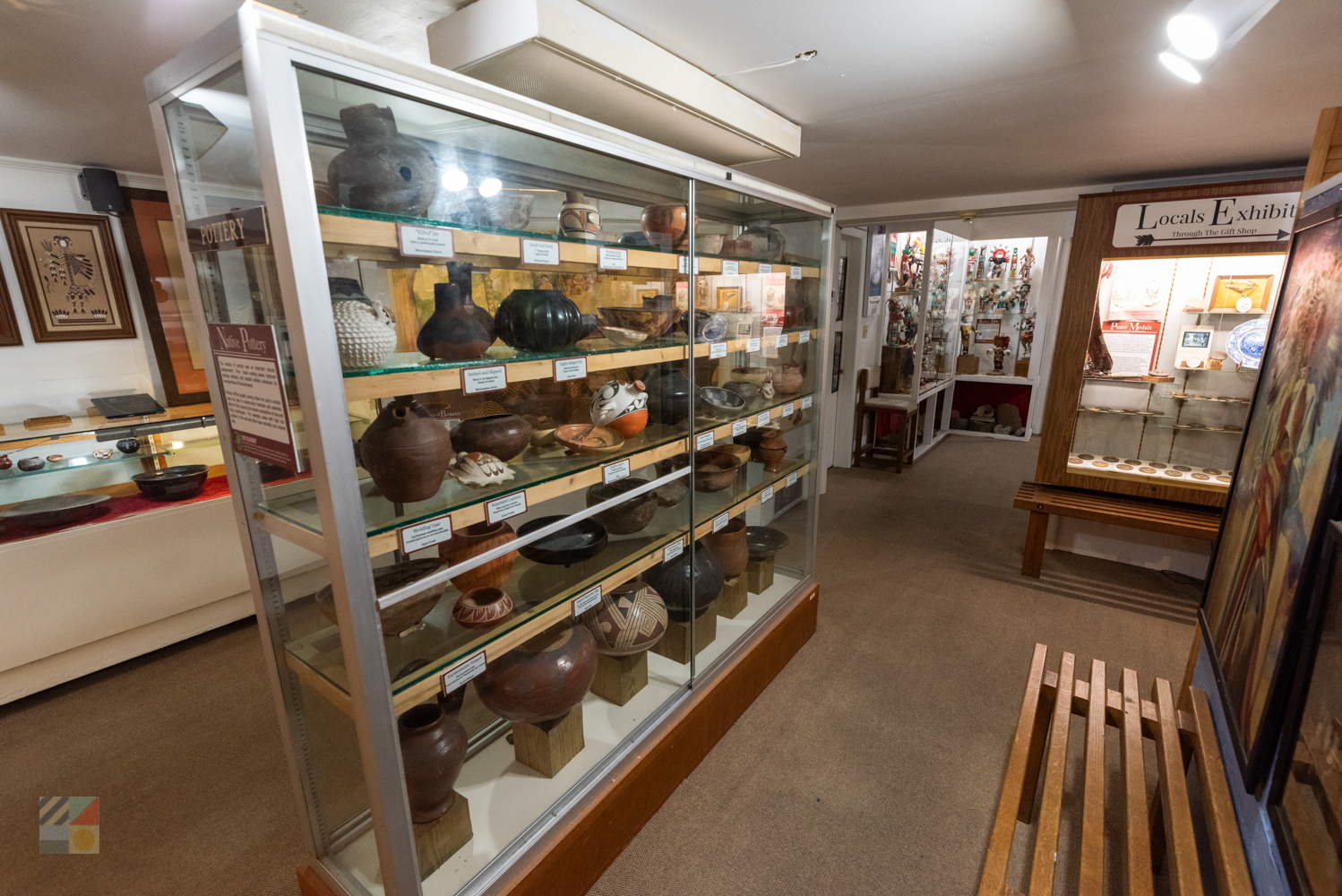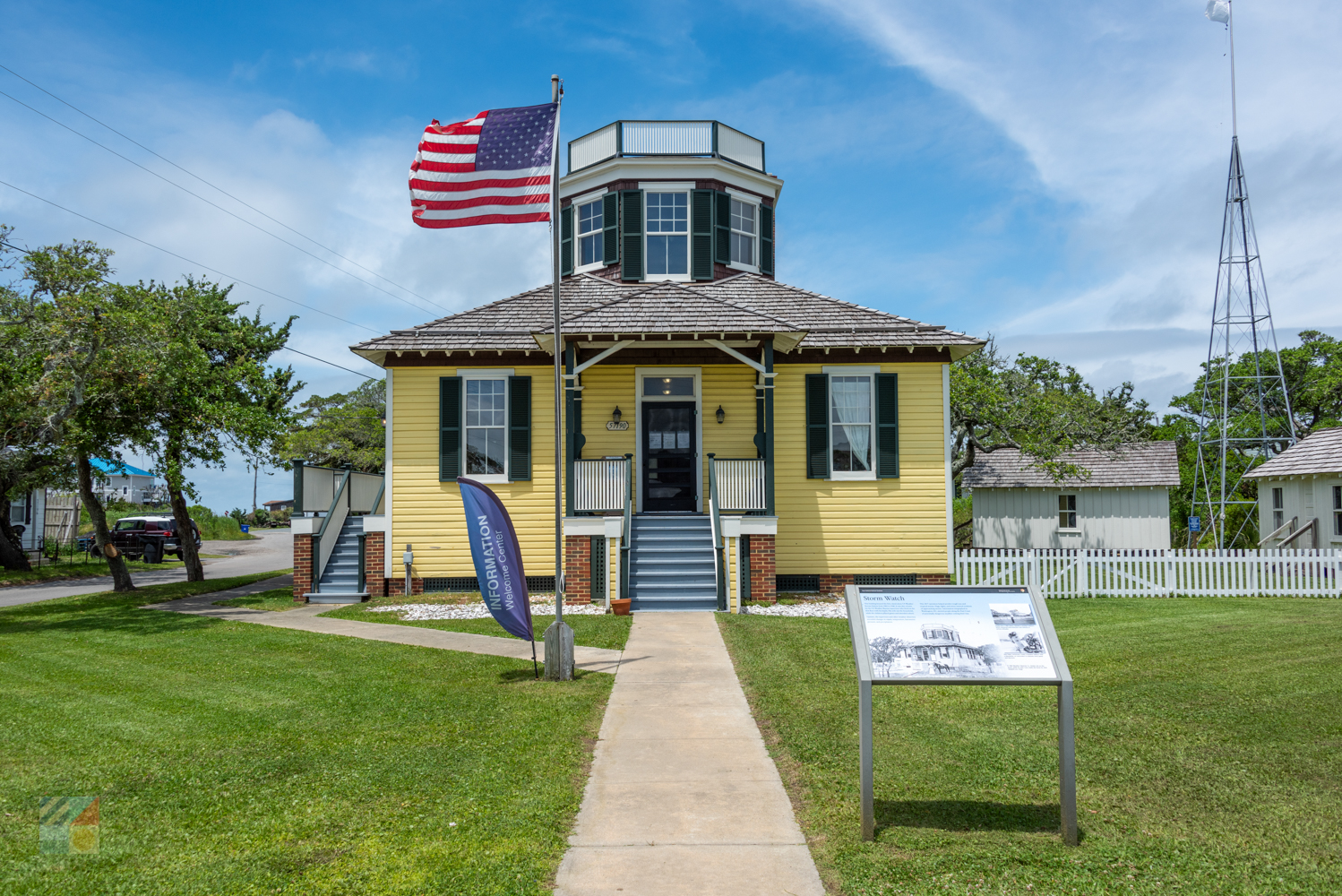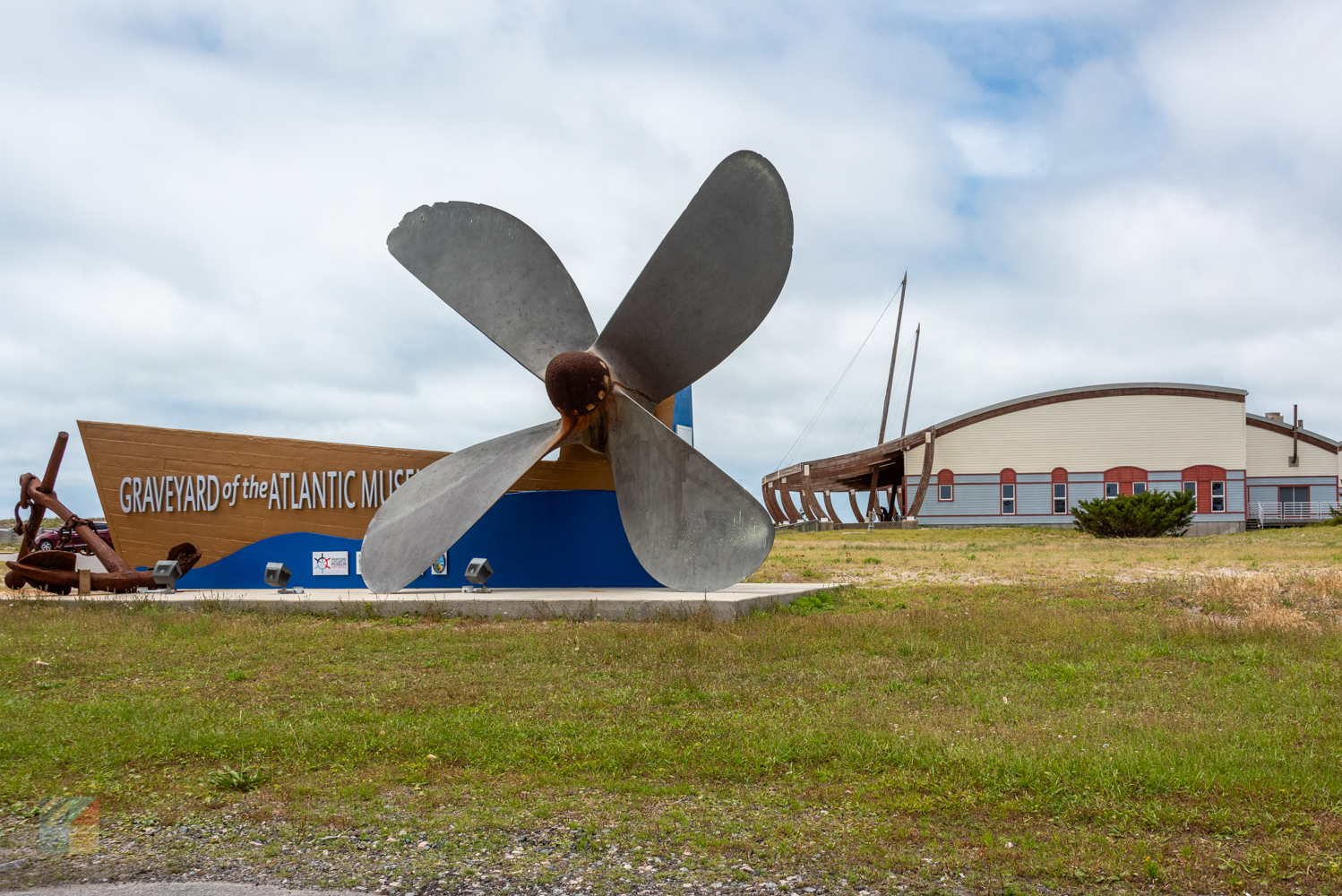Hatteras Island has been occupied for more than 1,500 years, and as a result, the small barrier island is filled with historic sites, headline-grabbing events, and impressive archeological finds.
Be sure and check out the historic local attractions on a Hatteras Island vacation to dig deeper into this unique Outer Banks' community's amazingly far-reaching roots.
Facts
Historians estimate that the island's earliest residents date back to around 500 AD, and were small tribes of local natives that lived on an unending diet of game, shellfish and seafood. Located miles offshore, the Hatteras Island natives lived peacefully for more than 1,000 years without the threat of invading tribes, a dwindling food supply, harsh winters, or any of the other factors that affected mainland native communities.

Hatteras Island was also one of the first regions that was "discovered" by New World explorers, and was where the famed Lost Colony originally landed before heading north to Roanoke Island. Though the fate of the Lost Colony is still not known, some historians believe that the original 116 settlers moved south to Hatteras Island to escape hostile Roanoke Island tribes. (These theories are strengthened by the mention of unusual "blue-eyed" natives in writings of the 1700s, and the recent discovery of a 16th Century English ring which was found in Buxton in the 1990s.)
The island was effectively settled by European colonists in the 1700s and was populated for the next several centuries by a small but hardy local population that depended on commercial fishing and hunting, the North Carolina lumber trade, and sustenance farming.
By the late 1800s, the ocean waters off of Hatteras Island were among the most traveled, and the most dangerous for coastal mariners, due to the infamous Diamond Shoals. The US government was forced to step in after dozens if not hundreds of shipwrecks were recorded in the region within a few decades' time.
Hatteras Island soon became home to a handful of newly established US Lifesaving Stations, which were manned by some of the most decorated Lifesaving Service crew members of all time. The new Cape Hatteras Lighthouse was also constructed around this time period, 1870, and would quickly rise to fame as the tallest lighthouse in the US, and one of the tallest lighthouses in the world.
As technology improved, the Diamond Shoals became less of a threat, but during World War II a new danger lurked off the Hatteras Island shores in the form of German U-Boats. Stealthy and hard to detect, the U-Boats destroyed several British ships passing through, and it was not unusual for wreckage and even bodies to wash ashore on Hatteras Island on a regular basis.
The epidemic of World War shipwrecks even lead to the construction of a small paved road that connected the beach with Buxton Woods, (which is found just several hundred yards away from the lighthouse), to make it easier for locals to haul debris and casualties inshore.
The latter half of the 20th century was a much sunnier time, and marked an exceptional period of growth for Hatteras Island, which was created via the paving of NC Highway 12 in the 1950s, and the establishment of the Herbert C. Bonner Bridge in 1963. Once visitors could arrive on the island without taking a ferry, development boomed and the island became one of the top vacation destinations for Outer Banks visitors.
Events
The following timeline outlines some of Hatteras Island's most notable eras and biggest events, from the first natives to the new waves of vacationing beach lovers.
- 500 AD - Experts believe that the first Native American tribes are established along Hatteras Island and the Outer Banks.
- 1524 Spanish explorer Giovanni Da Verrazzano lands on the North Carolina coastline, most likely somewhere in between Hatteras Island and Cape Lookout, and meets some of the friendly local natives.
- 1585 - "Hatterask" is first marked on an English map, which is a nod to the Hatterask Native Americans who live on the barrier island.
- 1587 - Capt. John White, the leader of one of the first new English settlements, initially lands on Hatterask before heading north and settling on Roanoke Island. The change in course would be a potentially fatal one, as the 116 colonists of Roanoke would inevitably disappear and become the notorious "Lost Colony."
- Early 1700s - European settlers in coastal North Carolina begin to trickle onto Hatteras Island.
- 1711 - "Kinnakeet," which is now known as Avon, becomes the first land grant on Hatteras Island.
- 1700s - Shipwrecks become more prevalent along the dangerous Diamond Shoals as coastal North Carolina because a popular trade route for mariners.
- 1794 - The newly formed US Government approves the building of a new lighthouse on Hatteras Island to help mariners pass through the region with ease.
- 1802 - The first lighthouse on Hatteras Island is constructed. Unreliable and not even visible for most offshore mariners, the structure was deemed a failure.
- 1846 - A new inlet opens on Hatteras Island, (Hatteras Inlet), which officially separates Hatteras from Ocracoke Island. Oregon Inlet, Hatteras's northern inlet border, opens just a few years later. Both inlets are formed by devastating 19th century hurricanes.
- 1850 - A mid-19th century US Census reports the existence of more than 1,000 residents on Hatteras Island in the towns of Kinnakeet (modern Avon), Chicamacomico (modern Rodanthe), and Buxton. Buxton has the highest concentration of residents, which is equivalent to more than half of the island's population.
- 1861 - Hatteras Island begins the Civil War as a Confederate Island, but it quickly taken over by Union forces. The island remains in Union control for the duration of the war.
- 1870 - Dare County is established, which includes the entirety of Hatteras Island
- 1870 - The new, and final Cape Hatteras Lighthouse opens. This new structure, which is still the tallest brick lighthouse in the world, is finally effective at helping mariners navigate through the treacherous offshore waters.
- 1870s- Lifesaving Stations are also established throughout the Outer Banks to perform ocean rescues and assist shipwrecks in need. Stations on Hatteras Island include the Chicamacomico Lifesaving Station in Rodanthe, the Pea Island Station near Oregon Inlet, Kinnakeet Station in Avon, and Little Kinnakeet Station just north of Avon.
- 1885 - The lifesaving stations receive the first telephone service on Hatteras Island
- Late 1800s and Early 1900s - Visitors first arrive on Hatteras Island in the form of wealthy hunters and fishermen. Hunt Clubs are established, including the grand, (and now long gone), 1,500 acre Gooseville Hunt Club in Hatteras Village.
- 1912 - The US Weather Station in Hatteras Village receives the first initial telegraph that the Titanic is sinking.
- 1915 - The first cars arrive on Hatteras Island.
- 1915 - The US Lifesaving Service is re-established as the US Coast Guard.
- 1930s - Hatteras Village receives electricity - (the rest of the villages are still dark.)
- Early 1930s - As part of the Post-Depression New Deal, the Civilian Conservation Corps (CCC) are tasked with building a dune system to run the length of Hatteras Island. (The majority of these dunes are still in place today.)
- 1940s - The Hatteras Island coastline becomes grisly as German U-Boat submarines and British ships lurk offshore. Several British ships are destroyed off the Hatteras Island coastline, which gives the island a new nickname: Torpedo Junction.
- 1950s - The rest of Hatteras Island receives electricity.
- 1952 - NC Highway 12 is paved throughout Hatteras Island. A small ferry provides transport for vehicles across Hatteras Inlet.
- 1953 - The Cape Hatteras National Seashore is officially established, with miles of land donated or sold by local residents. More than half of the island (approximately 60%) is now protected from private ownership and future development.
- 1963 - The Herbert C. Bonner Bridge is completed, replacing the former Oregon Inlet ferry, and paving the way for thousands and later millions of visitors to access Hatteras Island.
- 1960s and 1970s- Development begins to boom on Hatteras Island. A new oceanfront community known as "Hatteras Colony" is established along the central beaches of Avon.
- 1990s - A 16th century English signet ring is found in Buxton during an archeologist dig of a known Native American settlement, leading some historians to believe that the famed Lost Colony moved south and lived with the friendly local Hatteras Island natives.
- 2000 - Hatteras Island is now home to thousands of vacation rental homes, restaurants, a chain grocery store, and more than 4,000 residents, according to the US Census.
- 2003 - Hurricane Isabel causes massive damage to Hatteras Village, which includes the temporary opening of a new inlet in between Frisco and Hatteras Village. (The inlet is effectively filled in by emergency services within a month or so.)
- 2011 - Hurricane Irene causes massive damage throughout the island, especially in the tri-villages and Avon Village. A new inlet is opened in between Rodanthe and the Oregon Inlet, and a temporary beach is built. The new "Irene's Inlet" effectively becomes a popular new beach for fishermen and surfers.
Sites
Chicamacomico Lifesaving Station - The Chicamacomico Lifesaving Station in Rodanthe is a complex of original outbuildings and two renovated lifesaving stations, including the 1876 and 1911 main structures. The larger 1911 station also serves as the site's museum, which features artifacts and memorabilia from a century of local Lifesaving heroes.
Frisco Native American Museum - Discover centuries of local, regional and national Native American history at this year-round museum that features hundreds, if not thousands of artifacts. A network of nature trails behind the museum leads visitors through the maritime forest, which was one the preferred home of Hatteras Island's original residents.
Buxton Woods - Archeologists have been flocking to Buxton Woods in recent years, thanks to its wealth of excavation sites which were home to Native Americans for centuries. Take a deep hike into the woods, and you'll also come across the incredible and surprising sand dunes that are found in the middle of maritime forest, and once served as the island's original oceanfront border. Do a little digging, and uncover the stark-white seashells which can be found just beneath the sandy dune surface, and which are likely hundreds if not thousands of years old.
Cape Hatteras Lighthouse - The 1870 Cape Hatteras Lighthouse is one of Hatteras Island's most popular local attractions. The site features a museum and gift shop which are located within some of the structure's original outbuildings and lighthouse keeper's cottage. The museum features extensive exhibits on the lighthouse itself, its ill-fated predecessors, and its historic move inland which took place in 1999.
US Weather Station - This unique wood and brick building in the heart of Hatteras Village was where the first telegraph from the Titanic was received in 1912. Now a visitors' information center and small museum, the Weather Station has been completely restored to its original condition, and is one of the most unique buildings on Hatteras Island. Be sure and stop by the neighboring Burrus Red & White, which is one of the oldest grocery stores on Hatteras Island.
Graveyard of the Atlantic Museum - This 19,000' square foot Hatteras Village Museum is home to a large array of artifacts from centuries of Hatteras Island shipwrecks, as well as a host of exhibits on the island's role in piracy, the Civil War, and World War I and II.
Avon Village - Take a quick spin through Avon Village, (which is accessible via Harbor Road), which was the original local home for Avon, or Kinnakeet, residents. This "village within a village" is still primarily a local residential community, and visitors will spot a number of historic homes that date back to the late 1800s and early 1900s, and have foundations that are comprised of salvaged, shipwreck materials.
Sun Realty offers the Best Selection of Vacation Rentals on the Outer Banks. Our large selection of Outer Banks rentals means you can choose from a wide range of amenities, including private swimming pools, hot tubs, theater rooms, game rooms, pet...
Experience more adventure, fun, and style with Kitty Hawk Surf Company. As the trusted Outer Banks retailer for all top surf and lifestyle brands, including, Hurley, Billabong, RVCA, The North Face, Patagonia, Salt Life, Salty Crew, Volcom...
We offer one of a kind SALT COAST OUTFITTERS brand name tees, long sleeves, performance gear, Yeti tumblers, caps, eyeglasses, and more! Browse the fullest collection of coastal lifestyle clothing on the beach. Featuring a sizable selection of brand...
Founded in 1984 on the coast of the Outer Banks, NC, Farmer’s Daughter still remains a destination for people wanting great quality, outstanding selection of unique clothing, accessories, and gifts at affordable prices. Committed to offering...
